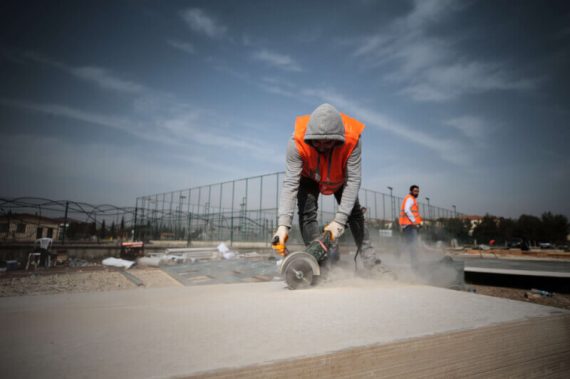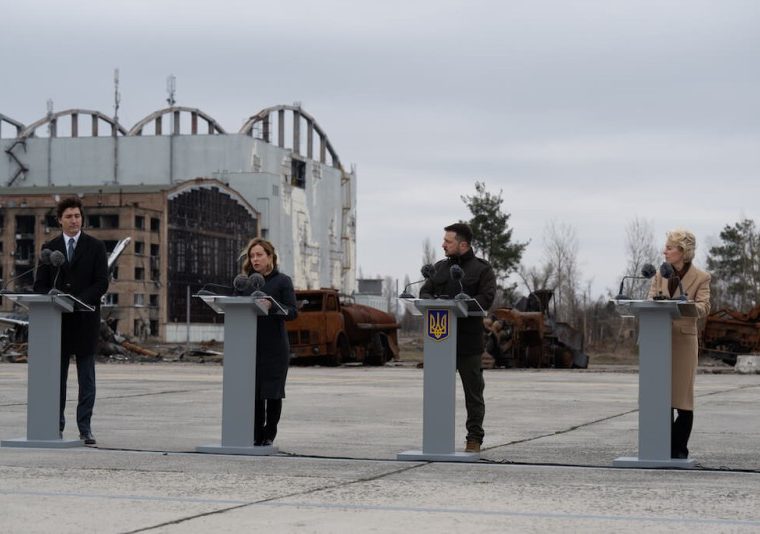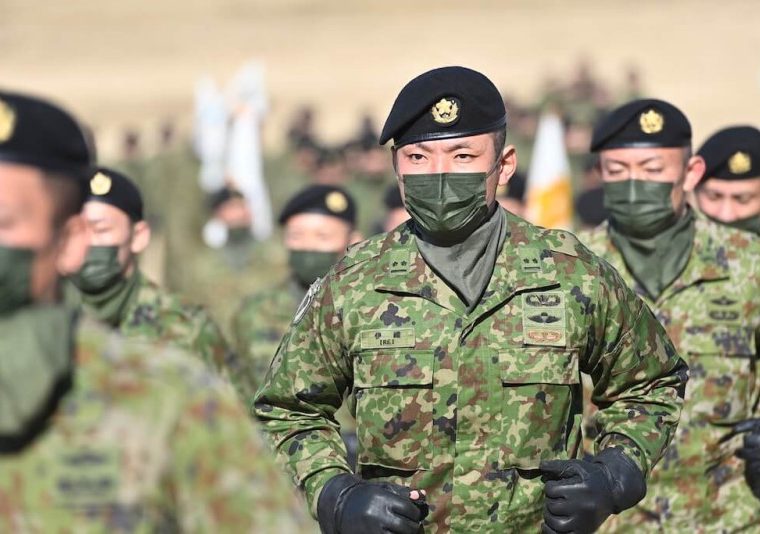A
t the end of June, the World Bank Group approved a $1 billion financing package for the earthquake-hit region of Turkey as part of the total $1.8 billion in financial assistance agreed upon earlier. This part of the financing will focus on public services and rural housing. The World Bank, together with the Turkish Treasury and Finance Ministry, has also agreed on an additional new project worth $450 million for Turkish SMEs (small and medium enterprises) in the 11 provinces of the earthquake region.
Meanwhile, Turkey has already launched construction projects for more than 180,000 new houses in the earthquake-hit region. The first group of houses will be handed over by October 2023. Search and rescue operations in these 11 provinces of southern Turkey are long over. New shelters, safe longer-term housing, and reviving economic activity are the new challenges. Above all, new physical and financial investments are needed to rebuild all the damage.
The earthquakes, two back-to-back earthquakes of 7.7 and 7.6 magnitude, have undoubtedly led to a massive loss of wealth in Turkey, and now is the time to invest and rebuild that wealth. However, a thorough recovery that can be managed and sustained over the long term will require new infrastructure, housing, and investment in human and physical capital. And these efforts, of course, raise a new issue: finding new financing to repair the earthquake damage.
With an average value of $60 billion, the longer-term reconstruction cost estimate ranges from $45 billion to $80 billion. This amount mainly reflects the direct costs associated with the loss of growth, debris removal, reconstruction of buildings and homes, renovation, loss of labor and human capital, costs of infrastructure and public facilities, and loss of education and human capital. The range could be increased to $45-150 billion if secondary costs are taken into account.
Financing options
There are already many alternative financing options that can be used during the long reconstruction process. New avenues are opening up to fund reconstruction, including more promising green finance options, microcredit, new blockchain-based financing models, Initial Coin Offerings (ICOs), and more antiquated Islamic financial instruments in addition, among others, to attracting foreign direct investment, public subsidies, debt-based financing, and equity-based and non-equity crowdfunding options.
Meanwhile, even an ex-ante funding source (such as reserve funds) could also help to secure advance funding for disaster-related costs. However, they have relatively higher opportunity costs compared to ex-post financing instruments such as debt financing, taxation, or other forms of international support.
In addition, Turkey has a considerable economic cushion to respond to and finance the reconstruction effort. A stable budget and low debt-to-GDP ratios give the Turkish economy and government considerable room to implement new public financing initiatives. The low debt-to-GDP ratio (below 35%) provides more room for borrowing. The fiscal situation is also not dire due to soaring tax revenues in 2022 (an increase of almost 100%).
In addition to tax incentives and subsidies, government spending could also be used effectively. At the same time, public policies such as new taxes, such as tax increment financing or TIF, and government spending also help economies recover much faster (via the investment and demand effects). Finally, business continuity and the resilience of the financial sector are extremely important. New infrastructure investments, construction projects, support and subsidies for energy and agriculture, and the inflow of large amounts of foreign and domestic capital into the region could help boost local economies in the short to medium term.
However, domestic budgetary or cash resources won’t be enough and external mechanisms are therefore expected, including substantial financial and diplomatic assistance. The World Bank, for example, will be essential as a major international organization with extensive expertise in crisis management. In particular, the longer-term international financing possibilities offered by the World Bank, the Asian Development Bank (ADB), the Islamic Development Bank (IDB), and the European Bank for Reconstruction and Development (EBRD) could prove very helpful in the future.
In the meantime, when deciding which financing options to prioritize, less costly, less bureaucratic, and more liquid and direct options should probably be given priority. Emergency funds of multinational organizations, existing national or international emergency financial assistance funds, and insurance instruments could be used more effectively. Other instruments, such as bonds or loans, are longer-term and more bureaucratic options. In the future, the creation of a European emergency fund or possibly the Organization of Islamic Cooperation (OIC) emergency fund should also be considered.
Another example is contingent loans which are low-cost emergency loans from international institutions to disaster-stricken economies and are used effectively by international organizations such as the World Bank. Special earthquake bonds (a type of debt-based financing) and tax increment financing options could also provide much needed funds to local authorities. Debt-based financing methods such as Treasury Inflation-Protected Securities (TIPS) or pay-as-you-go options could be repaid with incremental taxes.
Alternative payment options are becoming increasingly popular in these uncertain and unsettling times. One such area of cross-border and peer-to-peer payments is the use of blockchain technologies and cryptocurrencies. Even when banking activities are suspended or temporarily banned, this tool still allows money to be transferred. Favorable, low-cost loans from international institutions, access to international Islamic finance fund options, and sukuk-type bonds could prove useful in financing reconstruction efforts. Earthquake or broader catastrophe bonds (CAT bonds) are also used effectively today in many international natural catastrophe cases.
The construction of physical infrastructure such as hospitals, roads, bridges, and schools, and electricity, water, gas, and sewage systems is likely to be financed by international organizations, including the World Bank. These examples could be backed by one-off taxes, bonds, and even central bank money. Earthquake insurance, specific earthquake taxes, personal savings and assets, private bank loans, NGO support, domestic public assistance (from the Ministry of Finance and other public agencies), and external funding (from international organizations and governments) are just a few examples of a world of institutional funding sources for post-earthquake reconstruction.
The inflow of financial capital, including aid and loans, strong fiscal figures, strong financial resilience, and low debt-to-GDP ratio could help Turkey’s reconstruction efforts. All these foreign capital inflows, financial support, new stimulus packages, housing reconstruction, new infrastructure investment, and restructuring of rehabilitated companies could subsequently boost economic activity and put an end to a potential economic downturn. However, the focus should be on efficient, timely, and less bureaucratic funding schemes.
Alternatively, climate-smart building strategies could help to attract other funding related to or dependent on green development and environmentally friendly climate-smart housing projects. Earthquake-resistant housing, the construction of climate-resilient green buildings to enable green reconstruction strategies, and the use of technology for reconstruction are expected to attract more financial investment over time.
Perhaps the first step in a comprehensive funding program for post-disaster reconstruction should be the creation of strong new institutions. Moreover, such a central authority would also be likely to increase financial assistance to Turkey. Turkey has in fact created such a complementary institution, a new special “fund” (Afet Yeniden Imar Fonu) to raise long-term funds to reduce the burden of reconstruction on the public budget and to facilitate the rebuilding of cities, infrastructure, and the local economy.
On the other hand, there may even be no need to collect taxes or issue bonds in advance. The Turkish government is now effectively using credit expansion and monetary easing to facilitate disaster response, relief, and assistance, and their financing. The Central Bank of the Republic of Turkey (CBRT) has also reiterated its willingness to support the reconstruction process.
As a result, comprehensive public spending and lending schemes coordinated by treasuries, central banks, and other public institutions could work well. Central bank financing could also be considered as one-off financing from the Development Central Bank or helicopter money. The payment capacity of Türk Reasürans, and thus the National Disaster Insurance Institution (DASK), is already more than 117 billion TL. Insurance companies continue to pay their customers. And so far, several tens of billions have been paid out.
On the other hand, bilateral and multilateral agreements should be concluded with international and national financial institutions to secure financing for regional and local producers and commercial entities. It is also worth noting that the increased penetration of insurance and securitization should not only limit the burden on the public sector, but also the potential negative impact on the banking sector and the financial system.
Recommended
Policy approaches
Turkey’s experience with all previous disasters and the financial support it has received, especially from international organizations, will provide much-needed help in these devastating times. However, alternative new funds, new models for refinancing reconstruction, and a new revitalization process are definitely needed. Accordingly, a new article in Rouya Turkiyyah has also shed light on the critical issue of financing Turkey’s post-earthquake reconstruction efforts.
While the Turkish government has already mobilized a huge amount of financial and public resources for the reconstruction of the region, it was interesting to see that during its election campaign the Turkish opposition had no concrete plans in terms of finances. They talked about providing new houses free of charge, but it was never clear how they were going to pay for the houses.
The Turkish opposition had a good team of academics, but they still failed to come up with solid plans, especially on how they would finance the massive earthquake reconstruction. Politicians need to think beyond the opaque rhetoric of “resources from waste and corruption.” We cannot allow these disasters to set us back in achieving development and structural transformation goals—the stakes are too high.





